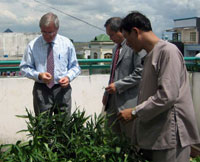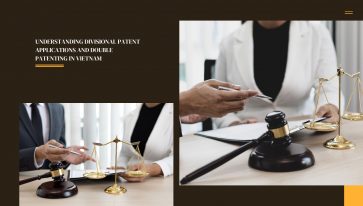 Some infringements of intellectual property rights can incur criminal prosecution under Article 212 of the Law on Intellectual Property.
Some infringements of intellectual property rights can incur criminal prosecution under Article 212 of the Law on Intellectual Property.
The Criminal Law, in turn, makes provision for four crimes involving IP infringement: (i) copyright infringement (Article 131), (ii) manufacturing and/or trading in counterfeit products (Article 156), (iii) manufacturing and/or trading in counterfeit products in the form of food or medicines (Article 157), and (iv) infringement of industrial property rights (Article 171).
In reality, criminal prosecution has only occurred in cases of counterfeit consumable goods viewed by the Police and the Procurator as being extremely serious. The lack of specific guidelines as to when prosecution is warranted has meant that the owner of IP rights normally has no idea how “serious” is determined. Law enforcement officials have essentially unlimited discretion.
Because of this uncertainty, the Government recently approved Inter-Ministerial Circular No 01/2008/TTLT-TANDTC-VKSNDTC-BCA-BTP providing detailed guidance on the criminal prosecution of IP rights infringements. The circular deals only with (i) copyright infringements committed for commercial purposes and on a commercial scale, and (ii) trademark counterfeit committed for profit. It is, however, hoped that criminal prosecution will now be available for all counterfeiters of goods, regardless of the type of goods.
Under the Criminal Law, a prerequisite for the institution of criminal proceedings is that the infringement must have “serious consequences.” The circular sets out three ways of calculating the seriousness of consequences, based on the profit the infringer has gained from the infringement, the loss to the lawful owner, and the value of infringing goods.
In practice, it is problematic to determine accurately the profit an infringer has gained from an infringement.
The other options, seemingly more feasible to apply, also present difficulties. The IPR owner must prove the loss he has suffered (which can include the cost of taking action). He will, however, may only be able to claim tangible losses despite any arguments that intangible losses such as to trade reputation are often more valuable.
The value of infringing goods is determined in accordance with Decree 105/CP/2006 of September 22, 2006, which gives such bases as public price, sale price, manufacturing price, or market price of equivalent goods.
The penalties for infringement include fines and probationary sentences as well as imprisonment.
The accompanying tables summarise three categories of copyright and trademark counterfeit that are subject to criminal prosecution.
|






